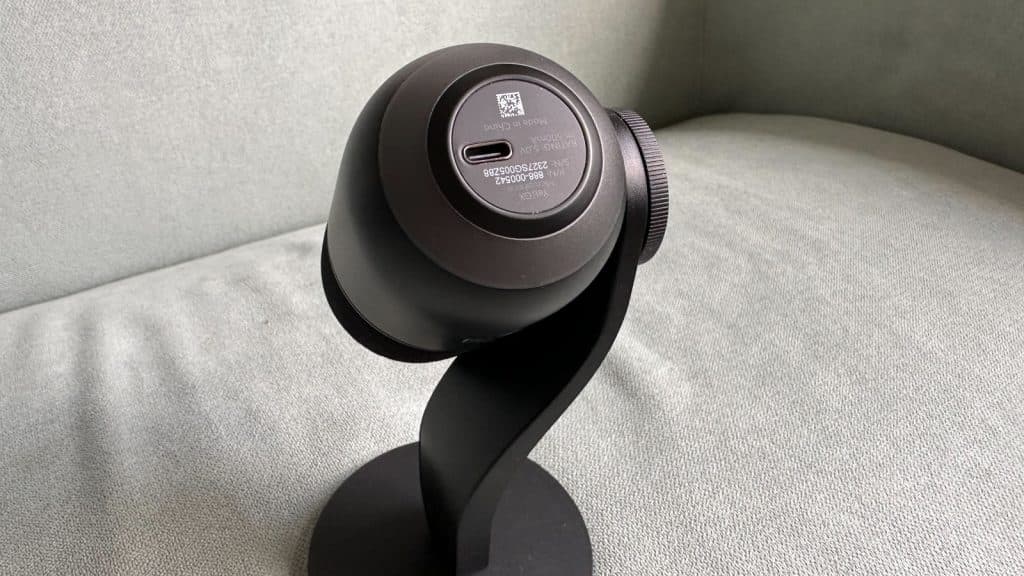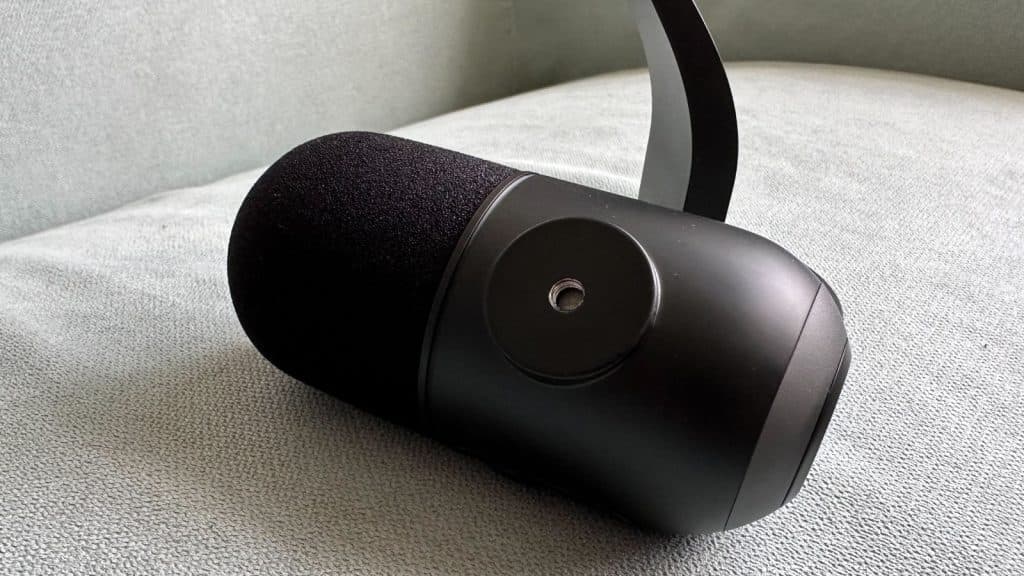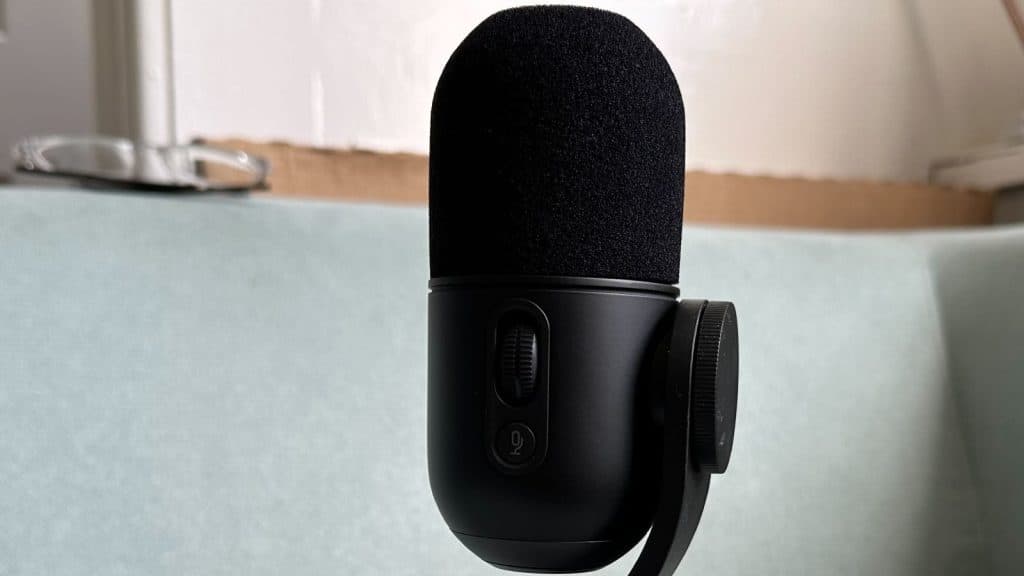The Logitech Yeti GX is the first microphone since the company scrapped the Blue brand. Has the beast been neutered or is it just as good?
Logitech is going all in on the creative space, especially with the continuing boom of streaming. By purchasing Blue, best known for the Snowball microphone, the company has shown that it’s taking its peripheral offering seriously.
While the company has revamped its mice, headsets, and keyboards, they’re also updating their microphone offering, too. With such stiff competition from a multitude of brands like Rode, HyperX and more, is the new Yeti GX really worth your hard-earned cash?
Article continues after ad
Key specs
● Microphone type: Dynamic
● Audio quality: 24bit / 96kHz
● Polar pattern: Supercardioid
● Frequency Response: 50Hz – 18kHz
● Connector: USB-C to USB-A
● Dynamic range: 95dB
● Signal to Noise ratio: 78dB
● Lighting: Dual zone RGB with LIGHTSYNC
● Mounting: Included stand or boom arm (adapter included in box)
● Price: $149.99
Setup
The Yeti GX is incredibly flexible for most setups. In the box, there’s a connecting thread to hook it up to your microphone arm, and the included stand is very quick to get up and running.
Article continues after ad
Inside the box, there are instructions to get it hooked up to the G Hub app, but we produce a lot of our videos on macOS and it picked it up straight away without the need for more software. However, if you want an assortment of effects and finer tuning of the microphone itself, using Logitech’s software is required.

It all connects over USB-C and unless you want to fiddle in the G Hub app, the Yeti GX might be one of the fastest devices we’ve ever had to set up. From box to connection, we’d estimate the whole process took about two minutes.
Article continues after ad
Much like the Litra Beam LX, we’d actually appreciate it if Logitech went overboard with the USB wire inside. The length and materials used are not exceptional, and we wound up swapping it for a braided, stronger cable with enough length to give us freedom at our desk.
Design
 Dexerto
Dexerto We really love the smooth curves on the stand of the Yeti GX. A lot of products these days just look the part and don’t add anything eye-catching to what is, essentially, a very boring device. The small rim at the bottom for the RGB isn’t distracting and we didn’t mind it silently humming in the background.
Article continues after ad
It still retains an identifiable “Blue” look, with rounded edges and the like, but it’s becoming very obvious that Logitech wants to break away from the past. There are no hinges or ladder-y look here, just a clean microphone that is built for a singular purpose.
Features

The microphone itself is dynamic, with quite a large range of which way you can point it before it sounds like you’re on the other side of a microphone.
Article continues after ad
You can quickly mute the microphone with the easily accessible button, while also altering the volume to your liking with the built-in wheel. It’s great having these on the hardware itself, but if you have the device hooked up to an arm, we find ourselves reaching for a software button rather than potentially deafening listeners by fumbling for the button.
Fewer Ads|Dark Mode|Deals in Gaming, TV and Movies, and Tech
Sound
The sound on the microphone is just fine. There’s nothing particularly great, or bad about it. It’s a perfectly serviceable microphone with nothing standing out. We still felt the need to go in and edit our voiceover in another program, just to bring the liveliness back out of the recording.
Article continues after ad
USB-C has come a long way, and what used to be a key difference between it and XLR microphones has been trimmed immensely.
No XLR
Though, while we understand why it isn’t included, the fact there’s no XLR option means that we’re not inclined to recommend this for those with setups involving a mixer or interface.
It brings that flexibility to a halt, where we had it on an arm, and couldn’t integrate it directly into our recording setup. Rode and other brands are now including the two ports together on the same device, giving the user the power to do what they want. It feels as if Logitech missed the memo with the Yeti GX and is adamant that USB-C is fine as the only option.
Article continues after ad
Should you buy it?
The Logitech Yeti GX is what we’d describe as not an entry-point microphone. The cost is still too prohibitive to classify it as that. However, as USB-C is now no longer that much of an issue for streaming or voice recording, we’d position this as the first big upgrade for those starting out. Or the next upgrade for those who just want the simplicity of plugging in a microphone to a PC.
Over Discord and other voice chat apps, it’ll still come out crunchy because of compression, but the end result of a nicely edited clip still blows a lot of USB microphones out of the water.
Article continues after ad
The Verdict: 3/5
From the outset, the flexible setup and unintrusive RGB make this appealing. However, if you’re deep in audio or looking for that next step up in your productions, this might not be the mic for you. The lack of alternative connection types other than USB-C makes it hard to recommend to people with interfaces or similar hardware, while the lukewarm sound means there’s still a lot of work to do once you’re done recording.
It’s not a bad microphone in any capacity, and Logitech’s first non-Blue branded Yeti microphone feels like it slots right into the place that Blue has been since it launched the Snowball. An easy, plug-and-play microphone that doesn’t do anything spectacular, but sure does do its job just fine.
Article continues after ad
If you click on a product link on this page we may earn a small affiliate commission.




